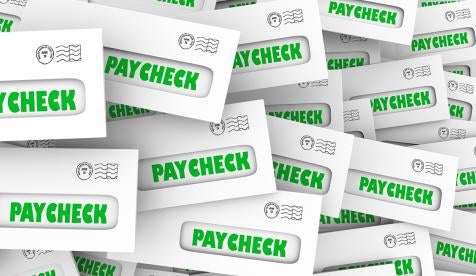Following up on our prior post (here), regarding the Paycheck Protection Program loans (“PPP Loans”), President Trump signed the Paycheck Protection Program Flexibility Act of 2020 into law (the “Flexibility Act”) on June 5, 2020. The Flexibility Act relaxes and modifies certain requirements to obtain PPP Loan forgiveness. Specifically, the Flexibility Act makes five main changes:
Payroll Tax Deferral. The CARES Act allows employers to defer the employer’s portion of social security tax deposits that are due between March 27, 2020 and December 31, 2020. However, the CARES Act originally specified that this deferral option ends when an employer obtains PPP Loan forgiveness. The Flexibility Act modified the CARES Act to provide employers the option to continue deferring these taxes, regardless of whether the employer individual obtains PPP Loan forgiveness. This modification also applies to self-employed individual who are eligible to defer their self-employment taxes.
Extended Forgiveness Period. Under the CARES Act and guidance issued thereunder, only expenditures made during the eight-week period beginning on the date that the PPP Loan proceeds were dispersed are eligible for forgiveness. The Flexibility Act modified the 8-week timeframe, providing that expenditures made up to 24 weeks after dispersal are eligible for forgiveness.
PPP Loan Term. Under the CARES Act, the non-forgiven portion of a PPP loan had a two-year term. The Flexibility Act provides that PPP Loan terms shall now be five years, instead of two. Notwithstanding, PPP Loans made prior to June 5, 2020 will still have a two-year term, unless the borrower and lender mutually agree to extend the term. In addition, the Flexibility Act now provides that interest on PPP Loans shall be deferred until the amount of loan forgiveness is determined.
Use of Loan Proceeds. Under the CARES Act, 75% of PPP Loan proceeds must have been used for payroll costs. The Flexibility Act modifies this requirement, specifying that only 60% of the loan proceeds must be used on payroll costs. The Flexibility Act also specifies that the other 40% of a PPP Loan – the amount not used for payroll costs – may be used to pay interest (but not principal) on a mortgage, for rent, or for certain utility costs. In addition, guidance released by the Small Business Administration on June 16, 2020, conforms to the new 24-week period and reduced 60% payroll requirements. Specifically, the SBA guidance states that the maximum payroll costs eligible for forgiveness over the 24-month period is $46,154 per individual employee. The new SBA guidance also clarifies that such payroll costs may include salary, tips, wages, covered employee benefits, retirement contributions, and state taxes imposed on employee payroll paid by the employer (such as unemployment insurance premiums).
Time and Ability to Rehire. The CARES Act provided a penalty-like reduction in loan forgiveness if an employer reduced the number of full-time equivalent employees, but the reduction could be avoided if the employer rehired employees by June 15, 2020. The Flexibility Act modified the CARES Act to provide employers additional time to rehire employees; employers now have until December 31, 2020 to rehire employees. In addition, the Flexibility Act provides that there shall be no reduction in the amount of PPP Loan forgiveness if an employer is able to document its inability to rehire the same or similarly qualified individuals, or if the employer is able to document its inability to return to the same level of business activity due to compliance with sanitation, social distancing, or other COVID-19 related requirements established by HHS, the CDC, or OSHA.
Employers should welcome these business-friendly modifications to the CARES Act and PPP Loan guidance. Businesses that are unable to rehire their workers or unable return to pre-COVID levels of operation due to new health and safety requirements should carefully document such inability. Failure to document an employee’s refusal to return to work (and the inability to rehire an equivalent replacement) could jeopardize PPP Loan forgiveness.





 i
i


